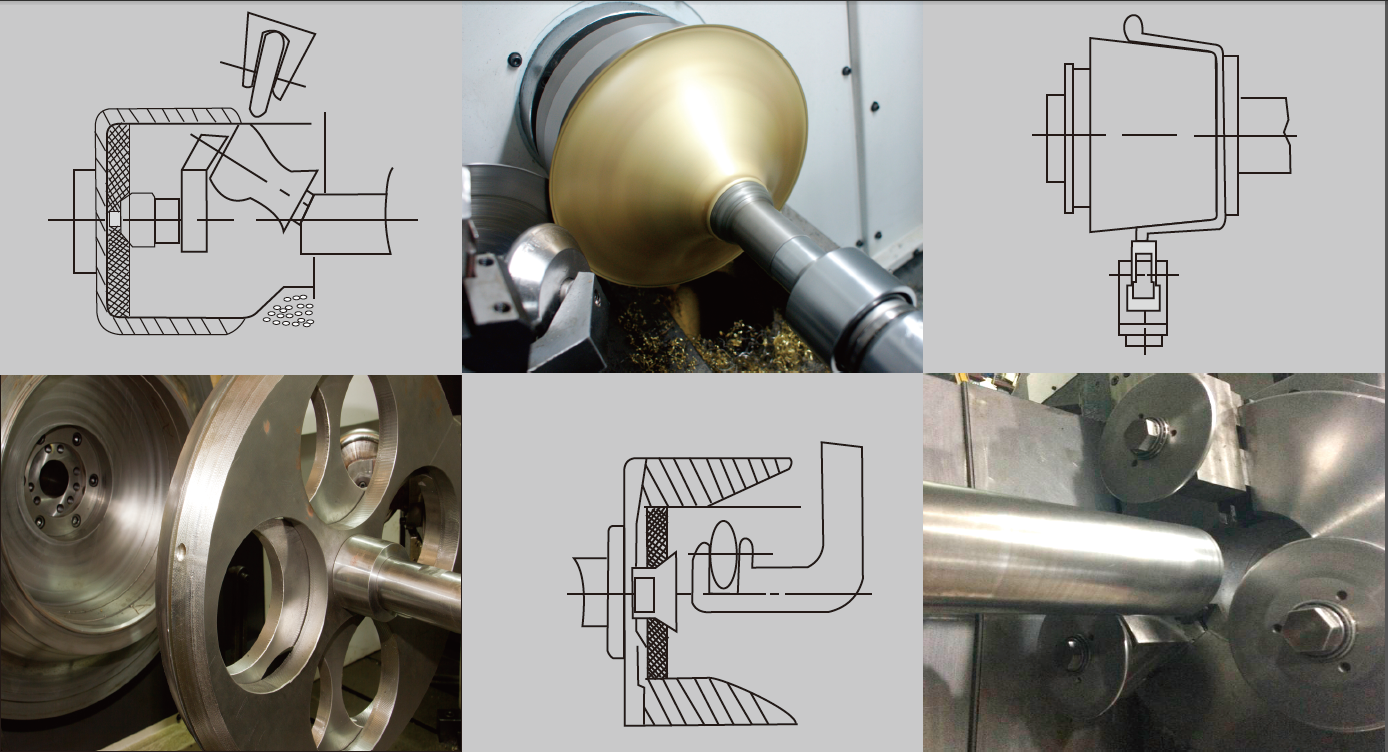
Metal Spinning Machine Metal spinning involves a machine set with a blank (a metal sheet or tube) that rotates at high speeds while a metal spinning roller shapes the work piece into a desired shape. Whereas early metal spinning relied on manual power, shaping only the softest metals, modern electric and hydraulic motors allow manufacturers to form all types of metals, including aluminum, brass, copper, steel and stainless steel.
As a “cold” process, metal spinning shapes pre-formed metal—the friction of the spinning machine contacting the roller creates the force necessary to shape the part. A worker can handle the spinning roller during the shaping process, or a computer numerical control (CNC) machine can use it to generate more delicate, intricate and precise patterns and shapes.

The CNC application moves the metal spinning roller out of the worker’s hands and into the grip of a CNC machine, which performs a pre-programmed sequence of operations on the work piece. With the equipment moving at a very rapid speed, the machine can apply the roller in several different ways, yielding multiple results. For instance, a stainless steel vase might require a number of grooves or decorative features—a designer can program the CNC roller to create each of these shapes in any given order, performing them within about 1/32” accuracy each time. The CNC machine rarely requires retooling, which results in much tighter turnaround periods, but even if the project requires new tooling, workers can swiftly assemble new rollers.
CNC metal spinning is quick, efficient and precise, but typically doesn’t have the versatility of deep drawing or pressing. Due to the nature of the process, metal spinning cannot create irregular shapes; however, for bell-shaped, spherical, and tubular forms, metal spinning is often highly cost-efficient. This is not a result of the high fixed cost of metal spinning, but of the relatively low variable costs.
Metal spinning is fairly flexible due to the ease of applying automation, which leads to faster lead times in producing short or long runs of a product. If a product doesn’t require specialized tooling, turnaround can be as short as two to three weeks. These faster lead times also foster appeal for metal spinning as a quick and efficient production method for prototypes or one-offs. With the use of CNC machines, metal spinning can be highly competitive with other forms of metal product fabrication.
Manufacturers use metal spinning to produce lamps, spheres, vases, solid wood furniture and many other items. It also has alternate applications, such as the production of metal sculpture for artistic and design purposes.
Although computer control systems provide a variety of advantages, even the most technologically advanced shops often possess hand spinning units. These devices allow increased manual control, which helps manufacturers better evaluate and systematize the eventual stages of a production plan for a particular component or product.
As interpreted through stories on medieval woodcuts, it has shown that manual metal spinning dates back centuries, but this older method relied on manually spun machines. As techniques developed, manufacturers began to use hydro-powered and electrically powered spinners, yet despite increased machine speeds, these spinners were still only suitable for shaping softer metals, such as aluminum and its alloys. Only after the introduction of hydraulic spinners could manufacturers begin to apply the cost-efficient process to harder metals like steel. The increased speeds of hydraulic machines, when combined with CNC capabilities, allowed for greater worker and part safety, but removed a certain level of craftsmanship from the equation.
Although CNC metal spinning is highly effective at turning out products quickly, efficiently and with tolerance for repeatability, manual metal spinning is still necessary for the development stages. In a pinch, it is also an effective method for producing short production runs in order to free up expensive CNC equipment for longer, more intricate production cycles.
Because there are a number of variables, it is important for customers and manufacturers to discuss the best method of spinning the metal and producing the product line. For instance, a part’s thickness changes after spinning, so both parties should evaluate how this change will affect the end product. In fact, proper estimation of the fixed and variable costs can mean the difference between profitability and loss; metal type, strength, hardness and size can all vary, and other types of metal shaping might prove better alternatives.


